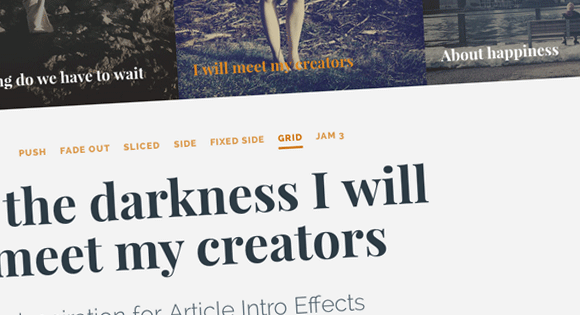In this article, Let’s discuss how to grab your readers’ attention.
We will thoroughly explore each technique to help you craft an irresistible introductory paragraph that sets the tone for success.
As a content creator, the ability to instantly draw in your reader is essential for creating engaging and memorable pieces.
By using effective techniques such as sharpening prose descriptions, integrating vivid imagery into the storyline, and infusing creative elements throughout the article, any writer can captivate their reader’s attention from the beginning of the article, regardless of how unique or complex the topic may be.
Have I Been Able To Get Your Attention Thus Far?
Good. Now, I’ll demonstrate how to obtain something that belongs to someone else. Your reader is only human and cannot focus on anything you say.
That’s the odd thing about the brain: in order to comprehend something, it has to zero in on a certain piece of data.
The ability to pay attention enables us to filter out information that is not important to us and to select the data that will enter and remain in our consciousness.
Because the human focus is limited, and we simply cannot give our attention to everything, what we choose to “pay attention to” is determined by our attention.
The brains of your readers are highly discriminating.
Therefore, we need to provide them with a reason to pay attention to the information that we provide rather than the myriad of other things that are available to them that they might be listening to.
How to Grab Your Reader’s Attention?
The initial sentences of any article, essay, or blog post are always going to be the ones that carry the greatest weight.
These are the points at which you may either captivate your readers or let them drift away.
And just in case you were curious about it, are these words that you are reading right now?
They are not the ones about which I am speaking. I’m referring to the ones that contributed to the formation of the reason you clicked on this link and have read thus far.
The phrase I’m referring to may also be found in the title.
I’m going to come clean right now and acknowledge that the headline of this piece was clickbait. They aren’t appealing to me in any way.
In the same breath, I can’t dispute the effectiveness of listicles. Even though they irritate me each time I see them, I still can’t help but be interested in them.
I’m curious about the top five items that will catch my attention. What are they?
Will reading this article make a difference in the quality of my writing? Will I get any new information?
And it brings us to the very first piece of advice.
1) Your Article’s Heading Ought to Pique the Interest of the Reader
You could probably handle it in a more understated manner than this, though. You might also take the other approach and be even more transparent.
The type of clickbait that states something along the lines of “And you can’t believe what happened next” or “What occurred afterwards nearly made me cry” appears to be highly successful.
Since then, I’ve grown to detest them, and out of principle, I’ve refrained from clicking on them (and seeing how quickly they vanished after initially appearing, so it seems to have many other people).
Nevertheless, the fundamental concept is a good one.
Your title must do more than inform; it must also pique the reader’s interest. If you can pull that off, your content will, at the very least, get a lot of clicks.
2) If You Want To Go Fishing, You’ll Need More Than Bait
If all you have is bait, then all you’re doing is feeding the fish. A fishing hook is essential to successful fishing.
That question is answered in the opening paragraph of your paper.
And it needs to function quickly. These days, the typical person has an attention span that is a little longer than eight seconds.
Therefore, you need to focus almost as much of your attention on the opening few lines of your work as you do on the title.
Create a mental image for them, make a bold assertion, astound them, or astonish them.
Whatever you do, you must avoid making them bored. If you do that, they most likely have another eight pages of content for you to browse through.
3) Ensure That It Is Worth Their Time and Effort
At this point, the information arrives.
This is the part of the conversation in which you really tell folks things about whatever it was that drew them in.
It goes without saying that the information you provide ought to be engaging.
That can indicate that it is educational, that your approach is entertaining, or – best case scenario – both of those things.
4) Employ the Appropriate Mode

The internet has its own distinct writing style. I can hear you yell, “One style!” while others ask, “Aren’t there thousands?” You are undoubtedly correct in that regard.
The fact of the matter is that while some of those styles are effective, the majority of them are not.
Those who often do poorly are the ones who utilize difficult vocabulary, have lengthy sentences, and talk about themselves in the third person.
Do you want to discover what performs more effectively?
Short phrases, easily understood language, first and second person (“I” and “You”), and making the reader feel as though they are a participant in the discussion are all important.
How exactly do you get people to feel that way? One approach is to inquire with questions.
Don’t you feel engaged? Okay, but you shouldn’t make it a habit of doing so.
There is such a thing as consuming an excessive amount of a desirable quality.
As I did at the beginning of this section, you can also pretend that the reader is conversing with you by pretending that they are the ones doing the talking.
That’s exactly why the only individuals who are allowed to pretend that people who aren’t there are talking to them are authors and prophets. Everybody else gets locked up.
5. Add Visual Aids
Humans are visual beings, and having paragraphs of text can sometimes be overwhelming for some people.
Using visual aids such as images, infographics, and videos can make your writing more engaging and can help break up long paragraphs.
Using visuals can also help convey your message more effectively and make your writing stand out.
6. Write in a Conversational Tone Credit
Using a conversational tone makes your article more relatable and encourages your readers to continue reading.
It’s important to remember that you are writing for humans, not search engines.
Your readers want to feel like they’re having a conversation with you rather than being lectured to. To make this more personalized, address your readers using ‘you’.
Using simple language and avoiding complex jargon also helps build a connection between you and your readers.
Quick Links:
- Tasks New Bloggers Need To Accomplish Before Writing a Word
- Key Elements of Writing Great Headlines
- Types of Blog Posts People Love To Read
- Ultimate List of Blogging Statistics and Facts
Conclusion: How to Grab Your Readers Attention?
Knowing how to grab your reader’s attention and write great, captivating content is key to creating successful blog posts.
Keeping your content focused, authentically expressing yourself, following good grammar, avoiding jargon, ending with a powerful conclusion, and making sure you leave the readers wanting more all go a long way towards crafting engaging content that people will enjoy reading and talking about.
A strong conclusion can be the difference between an average blog post and one that will truly make an impact.
Remember to be inspired, stay creative, and use all of these tactics to help create a memorable piece of writing that leaves behind a lasting impression.
With hard work and dedication, you can create amazing pieces for your audience day after day!



